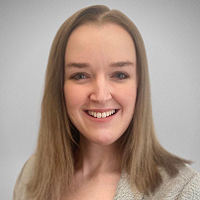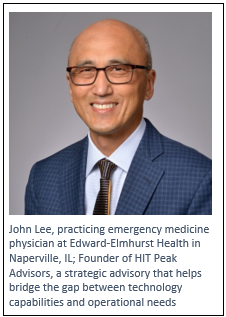 By Olivia Schlabach, Associate Vice President, FINN Partners
By Olivia Schlabach, Associate Vice President, FINN Partners
LinkedIn: Olivia (Williams) Schlabach
X: @FINNPartners
Nestled among the thorny bristles of the towering cacti and the sprawling campuses of some of the country’s most reputable hospitals, a group of roughly 1,000 attendees ranging from CIOs to senior healthcare IT leaders gathered for CHIME’s annual Fall Forum November 9-12. Held at the scenic JW Marriot Desert Ridge Resort and Spa, participants came together for three days of networking, programming and education around some of the industry’s biggest challenges and opportunities.
After talking with numerous executives at the Forum who serve on both the clinical and business sides of the industry, I was reminded again that there is no better offering to this industry than the art of connection. Read on for some of the takeaways gathered during those moments of connection and mark your calendars for next year’s Forum in sunny San Diego, California.
Takeaway #1: Get Out of Our Own Way
 One of my favorite conversations from this year’s Forum took place at a welcome reception on opening night. John Lee is a practicing emergency medicine physician at Edward-Elmhurst Health in Naperville, Illinois, where his group sees over 100,000 patients annually from Chicago’s west and southwest suburbs. The health system comprises three hospitals—Edward, Elmhurst, and Linden Oaks at Edward—and has annual revenues of more than $1 billion.
One of my favorite conversations from this year’s Forum took place at a welcome reception on opening night. John Lee is a practicing emergency medicine physician at Edward-Elmhurst Health in Naperville, Illinois, where his group sees over 100,000 patients annually from Chicago’s west and southwest suburbs. The health system comprises three hospitals—Edward, Elmhurst, and Linden Oaks at Edward—and has annual revenues of more than $1 billion.
Lee is the founder of HIT Peak Advisors, a company he created earlier this year in hopes of bridging the gap between clinical knowledge, healthcare operations and digital systems. A self-proclaimed “data geek,” Lee lit up when I asked him the not-so-simple question: What is healthcare’s biggest challenge right now?
“Information delivery is our one last hope for healthcare if we can get out of our own way,” said Lee. “All issues go back to information delivery. We have to democratize the delivery of data and make it more accessible.” Lee also talked about the seismic divide in communications, particularly among healthcare informaticists and clinicians on the ground floor. In order for anything to change with data delivery, these two groups must talk to one another.
HIT Peak Advisors was born with that end in mind. “We are a strategic advisory guiding the development and selection of healthcare innovation,” says the company’s mission statement. With years of industry knowledge, innovation and commitment, Lee is on a mission to help the next generation of HIT leaders uncover hidden opportunities and find solutions that meet operational and clinical needs.
Takeaway #2: Galvanize Action for a Healthy Community
Paulette Davidson,  President and CEO of Monument Health, is a total galvanizer. When you step back and explore the meaning of the word “galvanize,” which dates back to Italian physician and physicist Luigi Galvani in the 1770s, you’ll see what I mean. A play on the French word galvanisme and later borrowed by the English as galvanism, “galvanize” means “to stimulate or excite as if by an electric shock.”
President and CEO of Monument Health, is a total galvanizer. When you step back and explore the meaning of the word “galvanize,” which dates back to Italian physician and physicist Luigi Galvani in the 1770s, you’ll see what I mean. A play on the French word galvanisme and later borrowed by the English as galvanism, “galvanize” means “to stimulate or excite as if by an electric shock.”
In the early days of cleaning ICU rooms and running switch boards, Davidson may not have realized she would become a galvanizer, but reading Carol S. Dweck’s Mindset: The Psychology of Success shifted her thinking. Throughout her keynote presentation on day two of the Forum, Davidson spoke about how she made it through school, eventually working her way to the C-suite at Monument, a position she wouldn’t have dreamed of during the days of hairnets and bedmaking. “When you’re pushed out of your comfort zone, you can create change,” said Davidson, a self-proclaimed introvert.
Over the years, Davidson has worked to galvanize her teams to make Monument one of the most recognized and distinguished IDNs in the country. Monument is the largest healthcare system in Western South Dakota, and home to 5 hospitals, 23 clinics, 1 assisted living facility, 6 urgent cares, and 8 specialty treatment centers. After years of suffering from poor community perception, which included lack of trust, collaboration and action, Davidson and her executive team established a 5-year strategic plan with targeted goals that would support the system’s mission: Make a difference every day.
While strategic plans will vary among hospitals and organizations, Monument’s approach is straightforward.
- Deliver high-quality care
- Provide a caring experience
- Be a great place to work
- Impact our communities
- Be here for generations to come
If Monument’s list of accolades is any indication of success, I’d say it’s safe to believe they’re on the right track.
Takeaway #3: Focus on the People
 No trip to Phoenix would be complete without a meeting with Senior Vice President & Chief Digital Officer at Memorial Healthcare System, Jeff Sturman. One of the industry’s finest, Sturman was recently elected to the CHIME Board of Trustees, and previously served on the Florida Cybersecurity Taskforce in a role appointed by Governor Ron DeSantis.
No trip to Phoenix would be complete without a meeting with Senior Vice President & Chief Digital Officer at Memorial Healthcare System, Jeff Sturman. One of the industry’s finest, Sturman was recently elected to the CHIME Board of Trustees, and previously served on the Florida Cybersecurity Taskforce in a role appointed by Governor Ron DeSantis.
Memorial Healthcare System provides care for South Florida residents in South Broward County, among their five acute-care hospitals and one free-standing children’s hospital. The hospital brings in $1.3B in annual revenue, despite being a public system. Sturman attributes much of Memorial’s success to “operating like a private system.”
“We are looking at digital more strategically than ever before,” said Sturman, who recently shifted the system to Epic after 25 years on another ERP. “We have to get smarter about how we do things, and that starts with patient flow, labor and efficiency.” By utilizing Epic’s command center, Memorial has improved care delivery and reduced unnecessary strain on nursing staff, with renewed emphasis in virtual nursing and at home care. “We need to treat patients where they want to be treated. Don’t assume they’ll come to us.”
In Closing
While each of the leaders and organizations has experienced their fair share of victories and frustrations in recent years, the common thread woven into their journeys is connection.
Sturman said it best. “If you think of transformation as an IT project, you will lose.” Instead, remember that everyone across the organization has a responsibility to learn, educate and collaborate.
